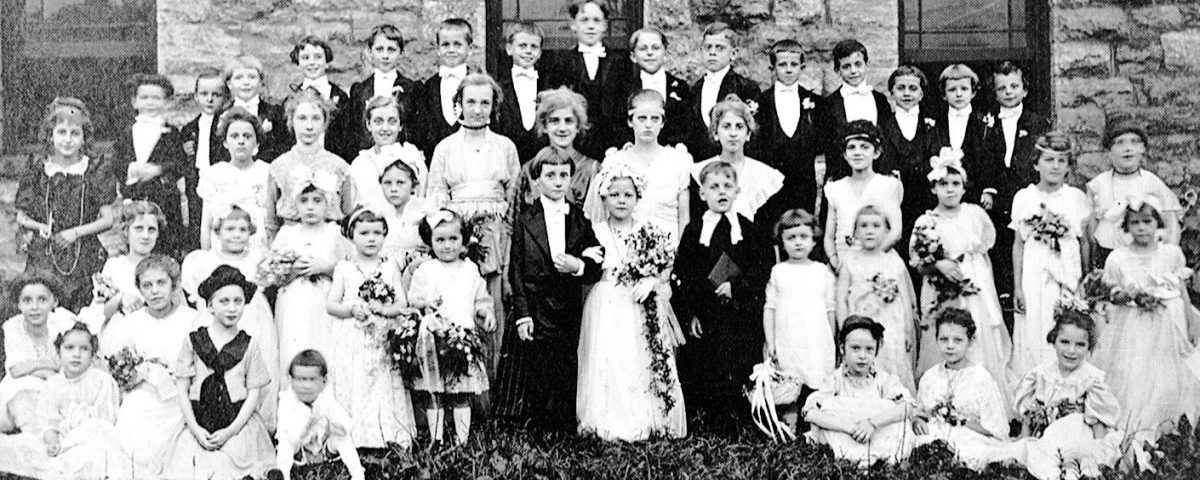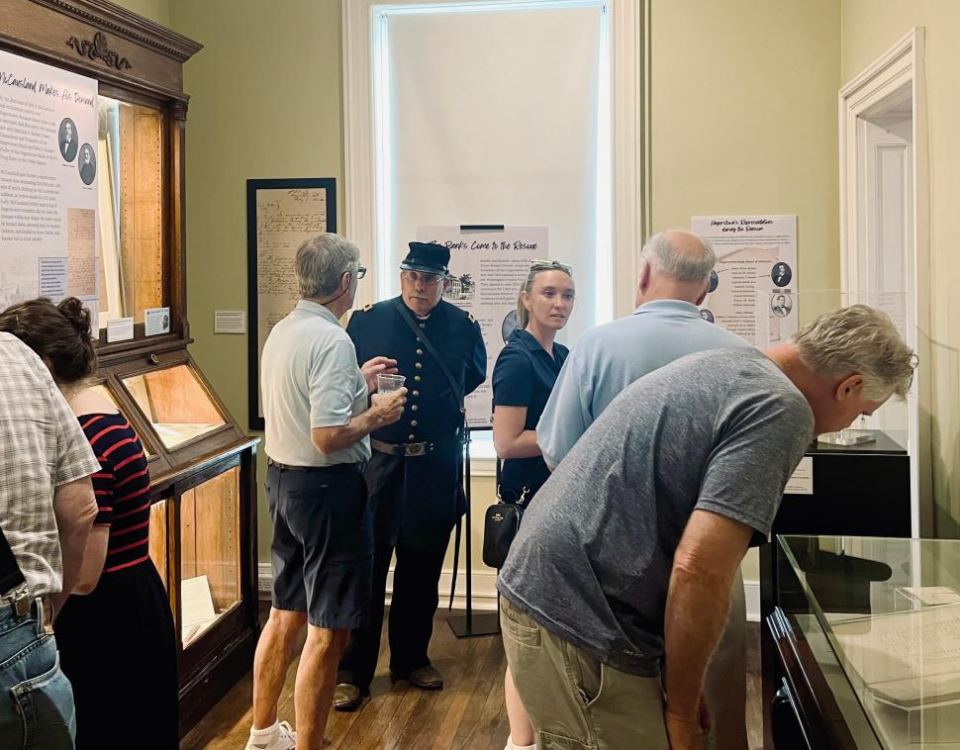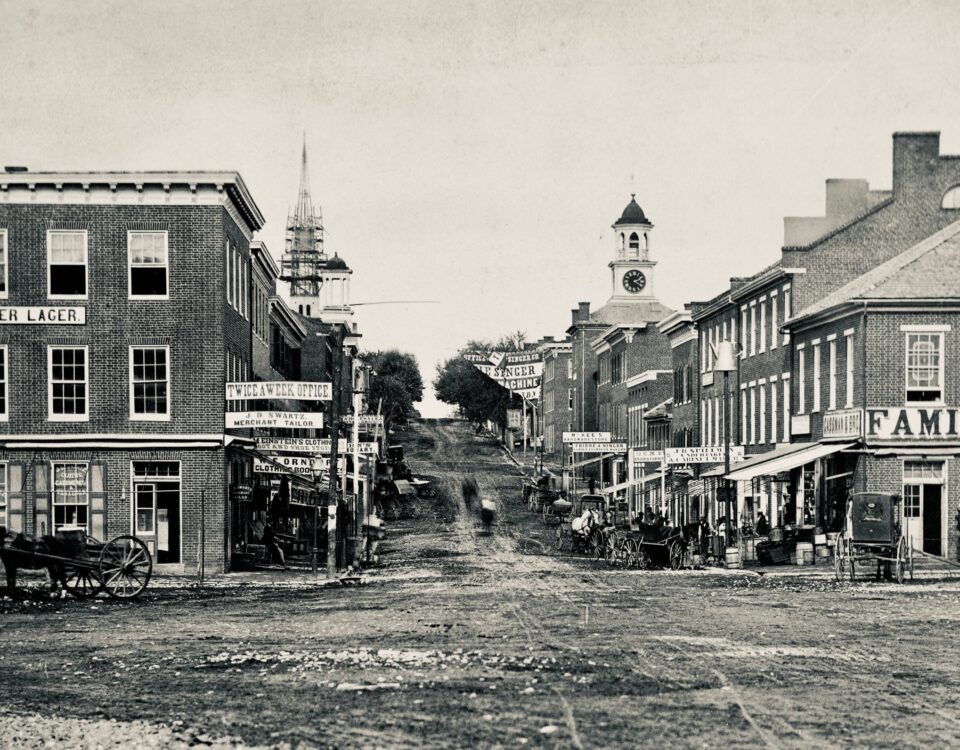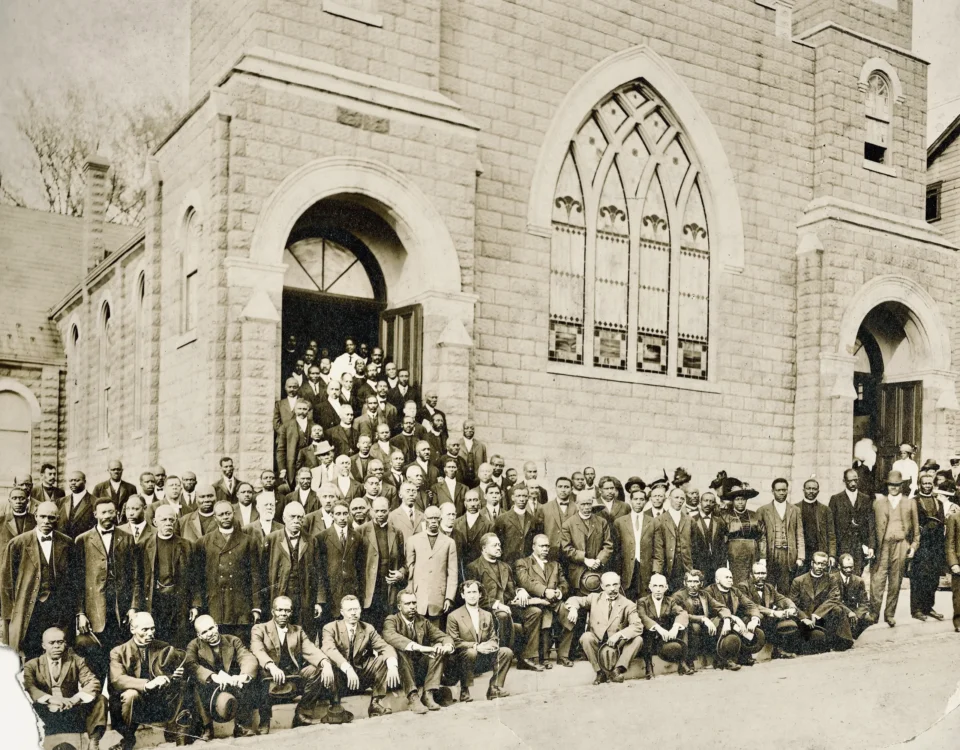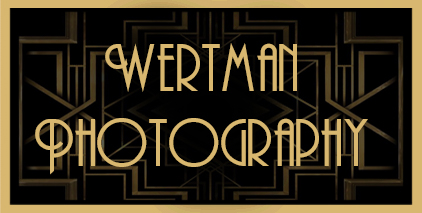Until the late 1960s, Hagerstown was home to an unusual sight: lavish wedding ceremonies where the heads of the participants barely reached above the tops of the pews. In a popular fundraising tradition that would span most of the 20th century, Hagerstown was the site of many mock marriages between children, colloquially called “Tom Thumb weddings.”
The earliest records of local Tom Thumb weddings date back to the early 1910s, when a small advertisement appeared in the Morning Herald inviting the public to Trinity Lutheran for the wedding of Mr. Tom Thumb to Miss Jennie June. Other groups continued the tradition until the 1960s, and the weddings helped to raise funds for everything from the Y.M.C.A. Camp at Big Pool to the purchase of choir robes for St. Mark’s Young People’s Choir.
These were not simple ceremonies, either, but lavish fetes with dozens of young participants. The brides and grooms were attended by large wedding parties, and often another child was dressed up as a miniature minister. The earlier weddings included elaborate handmade costumes for each child, including full tiny tuxedos for each of the boys, and long gowns and veils for the girls which highlighted the wedding fashions of the day. The churches were decorated with ribbon and live floral arrangements, just as they would be for an authentic wedding, and the young bride and her attendants carried real floral bouquets.
And Hagerstown was not the only small American town to fall in love with petite weddings. Tom Thumb weddings were a popular fad throughout all of 20th century America. But why? Despite the fact that the miniature, ornate weddings are very adorable, there is a weird element to them. Any other mention of “child marriage” would have parents up in arms, and making money off of the children seems exploitative. But as it turns out, the exploitative nature of these miniature marriages finds its roots in the original inspiration for the entire trend.
Charles Sherwood Stratton was better known to the American public as General Tom Thumb. Born with dwarfism, his early height topped out at 2 feet 5 inches. Stratton spent most of his life performing as one of P.T. Barnum’s most successful sideshow acts, and by the 1860s, he was part of a troupe of performing dwarves which included Lavinia Warren and her sister Minnie, along with George Washington Morrison Nutt, known on stage as Commodore Nutt. In 1963, Stratton and Lavinia Warren were married in a ceremony which would garner international attention.
Held at Grace Episcopal Church in New York City, with a lavish reception held after at the Metropolitan Hotel, the entire affair was a true Barnum sideshow spectacular. Minnie Warren and Commodore Nutt served as the wedding party, and while the wedding was free, tickets for the reception were sold for $75 each. 10,000 people attended the gathering, and the married couple greeted guests from atop a grand piano. Images of the wedding made the front cover of Harper’s Weekly. And the people of Hagerstown would have been very familiar with the pair. The Strattons, who after their marriage headed up a traveling troupe of dwarf performers, performed in Hagerstown on at least two occasions, once in 1867 and again in 1873. Their marriage would have been heavily covered by magazines and newspapers with local circulation. The first Tom Thumb marriages, held as revue shows by theatres, began appearing in the late 1800s, after the death of Charles Stratton. The miniature marriages, found delightful and adorable by the American public, soon became a staple of everyday American life, where they would remain until the late 20th century.
While the Strattons did extremely well for themselves under the management of P.T. Barnum, their lives were never truly their own. Charles Stratton began performing at the age of 5 and spent the next 40 years of his life in the public eye. For his wife, Lavinia, who had a more traditional and intellectual upbringing, the public life of a sideshow performer was a difficult adjustment. She was known to complain often that visitors to the show would pick her up, pet her, or treat her roughly, believing that she was either a child or not human. For both of them, their lives and public personas, even down to their own wedding, were tightly controlled by P.T. Barnum for the purpose of making money. So even at the original Tom Thumb wedding, exploitation of the participants was an unfortunate presence.
Tom Thumb weddings, their history and local popularity are just one element of local weddings that will be explored in a new exhibit at the Miller House Museum. Entitled “A Mutual Misunderstanding,” the exhibit will look at local wedding traditions and weddings from local history to explore the changing way Washington County citizens viewed weddings and marriage. The exhibit will open on February 3rd, 2018, and run until March 31st, 2018. For more information, please visit the Washington County Historical Society website at www.washcohistory.org. The world’s smallest wedding becomes a Hagerstown tradition

